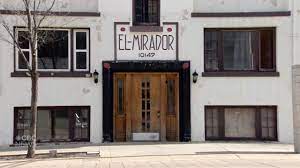Stepping into the past, the El-Mirador was a standing testament to what it means to build not just a structure, but a thriving, interwoven community, a sanctuary in the urban sprawl. Its success wasn't merely architectural—it was the cultivated culture.
Here, I lay down the argument that our future endeavors must embrace the soulful approach of El-Mirador.
Introduction
El-Mirador's story is intricately woven into the Edmonton cityscape, a story of resilience and vision by Ralph Henry Trouth. In its heyday, El-Mirador was a vibrant community hub with a neighborly atmosphere almost unheard of in today's fast-paced world. This cultural cornerstone not only invited life into its halls but created a legacy that has lasted far beyond the buildings themselves.
The Success of El-Mirador
Imagined and brought to life through a personal touch and the unique vision of Trouth, El-Mirador went beyond architecture; it fostered an unparalleled sense of community. Neighbors knew each other by name, shared activities, and built lasting friendships within its sun-kissed walls. The open-air halls, communal courtyards, and inviting balconies encouraged social interactions, creating a cult-like culture where loyalty to the space and each other was evident.
Lessons for Future Development Projects
What can we learn from El-Mirador? Firstly, the imperative of integrating the community's needs and spirit into the development framework. The brilliance in creating a sustainable legacy lies not in the concrete and steel but in embracing intangibles—ensuring a development is not at odds with the community's soul but rather celebrates it.
Secondly, fostering a sense of stewardship and pride among the residents should be a priority. Developments should encourage ownership at all levels so that every inhabitant feels they are part of something larger than themselves, caretakers of a collective dream.
Lastly, the building of a strong brand identity is paramount, but not through marketing gimmicks or peripheral offerings—it has to be sewn into the very fabric of the physical space, as was the case with El-Mirador’s distinct Spanish Revival style.
Challenges and Considerations
Despite the clear pathway illuminated by El Mirador, replicating such a feat is not without its hurdles. Preserving the values upon which a community is built while ushering in inevitable growth is a delicate dance. Moreover, inclusivity and diversity cannot be afterthoughts; they must be foundational.
Conclusion
And so, the onus falls on us in Edmonton—as city planners, as developers, as citizens—to carry forward the legacy. We must demand more from the spaces we create and inhabit, elevate our expectations, and compel future projects to embody the principles that made El-Mirador a blueprint for community culture.
In its demise lies a calling: to stir advocacy for community-centered development, to raise our voices for developments with heart. It's time to move past the era of buildings-as-commodities and into one where communities are nourished and preserved.
The essence of El-Mirador should not be archived into the annals of history, but instead allowed to ignite an impactful conversation about how we shape the places we live in.
How many buildings in Edmonton can you name that have a cult like culture? How can we create that today?
Let's craft our surroundings with the intention of fostering legacy, loyalty, and culture.
Advocate for community-centered development—the spirit of El-Mirador demands no less.
